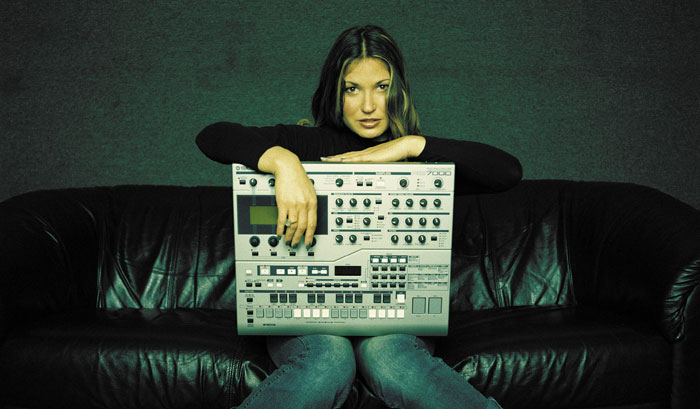


Charissa Saverio, the artist known as DJ Rap, is one of dance music's most compelling figures. While many pop fans have only known of her since the 1999 release of her Learning Curve album, Saverio has, in fact, been a major force in drum-'n'-bass music since the genre's emergence a decade ago. She later made a similar splash in the "big beat" scene.
But turntables and dance tracks represent only part of Saverio's talents. A classically trained pianist who grew up in the luxury hotels her father managed on four continents, Charissa is also a guitarist, vocalist, songwriter, and producer.
We recently spoke to DJ Rap about the as-yet-untitled follow-up to Learning Curve, a disc that promises to meld her songwriting and beat-building skills in exciting new ways.
I prefer not to be in any cages when I'm working.
What initially prompted the shift from spinning tracks to making them?
It was the other way around, actually. I made tracks first. I brought my first record out in 1989, when MIDI was relatively new. I was using very simple gear, just a cheap little keyboard. Then I got a small Yamaha that let you record about ten seconds of a sample, enough to steal a hip-hop break. Ever since then I've been buying equipment and learning how to use it. I just got the new Yamaha RS7000. I've been pleasantly surprised by how easy it was to use, both as a stand-alone unit and as part of my studio. And I can't wait to try it out live!
What are some of the standout features?
I like the "slice" function, which you can use over both the internal patterns or as an insert over other programmed patterns. This feature has proved to be invaluable. The distortion is great for getting crunchy guitars and drums, and the amp modeling is exceptional. The preset sounds are very rich, and it's easy to manipulate them into exciting new ideas.
How do you rate the ease of use?
Well, I found the beat programming to be very intuitive. The loop/remix function is a much quicker way to cut up loops than the traditional methods. The automation side is very easy, with all filters, effects, and LFOs easily recordable. Whether I'm using it as an "idea box" or as a main part of my studio, I find that the RS7000 appeals to all levels of musical production.
You're known for mixing heavy beats and atmospheric textures. Which part comes first?
In drum-'n'-bass, what works best for me is to start with a loop, keep it going round and round, and find things that work with it. When everything works with the loops, I can add more. Big beat is similar. But songs are a whole different vibe. I think about how I'm feeling and what I want to communicate. It's much more fun, because you can get as musical as you want without worrying about production. The production doesn't dictate the mood or what I'm going to do. It's not all about the beat and the bass. In addition, drum-'n'-bass has become increasingly specific and formulaic. So, right now I feel more expressive when I write songs. I prefer not to be in any cages when I'm working.
You're working with a band now.
Yes. My current method is to record everything live and then manipulate the tracks in production. That's something I learned from my last record. It was very much created in production, which was all right, but when we tried to get live players involved later, it was very difficult. I enjoy much more developing songs with a group of musicians. After we've developed them, I record all the band's parts, and then I start to get creative with the tracks. If you have a bassist playing live, you have a real vibe. But once I have that vibe recorded, I can put it into a sampler and start experimenting. It's a very interesting way to work.
Will your next record surprise your fans?
Absolutely. It's a completely different direction. I don't want to give too much away, but it will obviously be cutting- edge. It will be influenced by the dance scene but will focus much more on songs and my group. I've had a chance to work with some really cool songwriters and producers. And I want to do something wild onstage, quite heavy and hard, but there will be soft, beautiful areas as well.
























